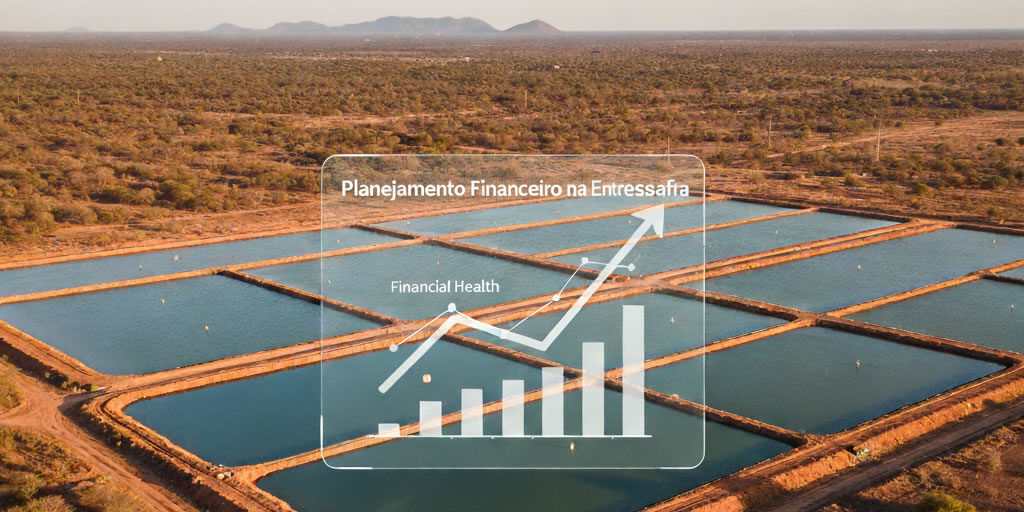- Software Gestor para Aquicultura
- (85) 2139-6730
- contato@despesca.com.br
Efficient Cash Flow: 10 Essential Tips for Your Farm

Aquaculture Waste Disposal: A Comprehensive Guide to Techniques and Utilization
26/09/2025
Alternative Proteins: The Sustainable Future of Aquaculture Feed
30/09/2025Financial management is one of the most critical pillars for the success and longevity of an aquaculture farm. Many producers, with vast experience in management and production, often face difficulties due to not giving proper attention to their business’s financial health. Consequently, a lack of visibility into finances can lead to misguided decisions, compromising operations. Therefore, structuring an efficient cash flow for your farm is not just good practice; it is a strategic necessity.
A well-organized cash flow offers a clear view of the business’s liquidity, allowing for the anticipation of problems, planning of investments, and making decisions based on concrete data. The following are 10 fundamental tips for implementing robust and professional financial control.
1. Separate Personal Finances from Farm Finances
The first and perhaps most important step is to create distinct bank accounts and cost centers for the farm and for your personal expenses. This separation is crucial for understanding the true profitability of the venture, as well as facilitating accounting and obtaining credit. Mixing finances prevents an accurate analysis of operational results.
2. Record and Categorize All Transactions
Every incoming and outgoing movement of money must be recorded, without exception. From purchasing post-larvae and feed to paying utility bills and salaries. Moreover, it is essential to categorize these movements (e.g., “Feed Costs,” “Labor,” “Maintenance,” “Revenue from Batch X Sales”). This organization allows you to identify where the money is going and which areas generate the most costs.
3. Project Future Revenues and Expenses
Cash flow is not just for looking at the past; its greatest strength lies in predictability. Based on previous production cycles and market conditions, project revenues and expenses for the coming months. This helps anticipate periods of tight cash, such as before harvesting, and plan actions, such as negotiating with suppliers or seeking working capital.
4. Closely Monitor Input Inventory
Inventory, especially feed, represents significant capital that is tied up. Rigorous inventory control, integrated with cash flow, prevents unnecessary purchases that compromise liquidity and also prevents the shortage of essential inputs that could paralyze production.
5. Calculate Production Cost per Cycle
Understanding exactly how much it costs to produce a kilogram of shrimp or fish is vital. Cash flow, when properly categorized, provides the necessary data for this calculation. Knowing the production cost allows for setting more strategic selling prices and identifying areas where expenses can be reduced without affecting quality.
6. Plan for Seasonality and Maintain an Emergency Reserve
Aquaculture is an activity subject to market seasonality and unforeseen events, such as weather problems or disease outbreaks. Therefore, financial planning must account for these scenarios. Building an emergency reserve, equivalent to a few months of fixed costs, provides the necessary security to navigate difficult periods without compromising the long-term health of the business.
7. Manage Payment and Receipt Deadlines
Aim to align the receipt deadlines for your sales with the payment deadlines for suppliers. Negotiating longer payment terms for inputs while trying to reduce the time to receive from your customers can significantly improve the farm’s liquidity, even if the total profit remains unchanged.
8. Regularly Analyze the Cash Flow Statement (CFS)
Cash flow should not be a static document. It is essential to analyze it weekly or, at a minimum, monthly. This periodic analysis allows for identifying trends, such as an increase in a certain cost, and quickly correcting course before the problem escalates.
9. Use Technology to Your Advantage
Recording everything on paper spreadsheets or even electronic spreadsheets can be laborious and prone to errors. Using management software, such as Despesca, automates much of this process. The platform allows for simple recording of expenses and revenues, feed inventory control, generation of production cost reports, and intuitive visualization of cash flow, integrated with management data, providing a 360º view of the farm.
10. Seek Professional Advice
Finally, do not hesitate to seek the help of an accountant or a financial consultant specializing in agribusiness. A professional can help interpret your cash flow data, offer valuable insights for cost optimization, and assist with tax and strategic planning for the farm.
Implementing an efficient cash flow for your farm is a continuous process that requires discipline. However, the result is more professional management, more assertive decisions, and consequently, a more profitable and sustainable business.




